Service Alert
Postal delivery
CELA has restarted production and distribution of embossed braille, printbraille and reloading of Envoy Connect devices. There may be delays in receiving your materials due to rotating strikes by Canada Post workers.
CELA has restarted production and distribution of embossed braille, printbraille and reloading of Envoy Connect devices. There may be delays in receiving your materials due to rotating strikes by Canada Post workers.
Showing 1 - 20 of 49 items

By James Gladstone, Yaara Eshet. 2021

By Nicole Panteleakos. 2019
"Tender and illuminating. A beautiful debut." —Rebecca Stead, Newbery Medal-winning author of When You Reach Me A heartrending and hopeful…
debut novel about a nonverbal girl and her passion for space exploration, for fans of See You in the Cosmos, Mockingbird, and The Thing About Jellyfish. Twelve-year-old Nova is eagerly awaiting the launch of the space shuttle Challenger —it's the first time a teacher is going into space, and kids across America will watch the event on live TV in their classrooms. Nova and her big sister, Bridget, share a love of astronomy and the space program. They planned to watch the launch together. But Bridget has disappeared, and Nova is in a new foster home. While foster families and teachers dismiss Nova as severely autistic and nonverbal, Bridget understands how intelligent and special Nova is, and all that she can't express. As the liftoff draws closer, Nova's new foster family and teachers begin to see her potential, and for the first time, she is making friends without Bridget. But every day, she's counting down to the launch, and to the moment when she'll see Bridget again. Because Bridget said, "No matter what, I'll be there. I promise."
By Stuart Gibbs. 2014
After the death of Moon Base Alpha's top lunar scientist, twelve-year-old moon-colonist Dashiell Gibson suspects it was murder. However, no…
one believes him, and Dash investigates the clues left behind. For grades 4-7 and older readers. 2014
By Laura Watkinson, Marc Ter Horst, Wendy Panders. 2019
A quick overview about how our planet was formed, its composition, and how it continues to evolve. Includes discussion on…
climate change and Earth dwellers. Translated from the 2014 Dutch edition. For grades 4-7. 2014
By Jennifer Swanson, National Geographic Kids, Parry Gripp. 2018
Highlights the differences and similarities between the deep ocean and outer space. Discusses the danger--and attraction--of exploring both of these…
vast domains, the technology involved, and amazing discoveries. For grades 4-7. 2018
By Martin Jenkins, Stephen Biesty. 2017
Presents a brief history of humankind's space exploration, covering such topics as the first human missions, life on the International…
Space Station, and our hopes to colonize Mars. For grades 4-7 and older readers. 2017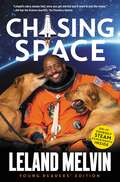
By Leland Melvin. 2017
A NASA astronaut shares his experiences that led him off the football field and into space. Discusses his time as…
an NFL football player and as an engineer, as well as the spacewalk training accident that left him with a partial hearing loss. For grades 5-8 and older readers. 2017.
By Mary Kay Carson, Tom Uhlman. 2016
Overview of NASA's New Horizons spacecraft project and an introduction to the team of scientists as they finally explore Pluto,…
the space entity originally considered a planet. Highlights the July 2015 Pluto system flyby and the targeted 2019 spacecraft visit to Kuiper belt object 2014 MU69. For grades 4-7. 2016
By Christopher Swiedler. 2020
A harrowing, pulse-pounding race for survival that New York Times bestselling author D. J. MacHale says "will leave you breathless."…
Michael Prasad knows he shouldn't go out on the Mars surface alone. It's dangerous. His parents have forbidden it. And the anxiety he feels almost every time he puts on a spacesuit makes it nearly impossible for him to leave the safety of the colony. But when his best friend, Lilith, suggests they sneak out one night, he can't resist the chance to prove everyone—including himself—wrong. As the two ride along the Mars surface in a stolen rover, miles from the colony, a massive solar flare hits the planet, knocking out power, communication, and navigation systems, and the magnetic field that protects the planet from the sun's deadly radiation. Stranded hours from home with an already limited supply of food, water, and air, Michael and Lilith must risk everything if they're to get back to the colony alive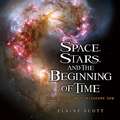
By Elaine Scott. 2011
Recounts discoveries about the universe--seeing a star being born, tracking a galaxy light-years away, verifying the existence of dark energy--made…
since 1990 by scientists using the Hubble telescope. Discusses the 2009 mission to update Hubble so it could continue probing the mysteries of the cosmos. For grades 4-7. 2011
By Sigmund Brouwer. 2019
This riveting narrative told from the astronauts' points of view offers a unique approach to the story behind Apollo 11's…
successful --- though nearly disastrous --- 1969 moon landing. Readers are brought along on the ride of a lifetime, as they relive every step of the mission, including the nail-biting (and relatively unknown) crucial moments when it came close to failure. From ignition to moon walk to splashdown, the story is structured in eleven exciting episodes. And, setting this book apart, each episode is linked to the innovations and discoveries from the past four centuries that made it possible --- from Copernicus to Einstein, the sextant to Velcro. It's a new perspective on an epic journey, and the science, technology, engineering and math that set it in motion! Bestselling and award-winning author Sigmund Brouwer offers children an original look at the historic feat that captivated the world in July of 1969. The information is thoroughly researched and includes NASA-sourced photographs throughout. Highly readable and with a compelling modern graphic design, this engaging book is sure to generate interest among a broad range of readers. At the same time, it's teeming with math, engineering, science and technology lessons that give young readers the opportunity to make the connections between what they learn in school and awesome things that happened in the real world. There are strong curriculum links here, including earth and space systems, physical sciences, chemistry, math, engineering, technology and applied science, as well as history.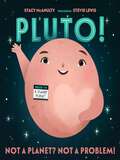
By Stacy McAnulty. 2023
This program features narration from the author. Hot diggity dog! Meet Pluto! The runt of a litter of eight planets.…
Pluto may not be the biggest or fastest planet to revolve around the Sun, but it has a unique story to tell. From the tale of how it was found by humans to its naming as a dwarf planet, it's Pluto's turn to take the spotlight and properly re-introduce itself. With characteristic humor and charm, Stacy McAnulty channels the voice of Pluto in this next celestial "autobiography" in the Our Universe series. Rich with kid-friendly facts, this is an equally charming and irresistible companion to Earth! My First 4.54 Billion Years and Sun! One in a Billion . A Macmillan Audio production from Henry Holt & Company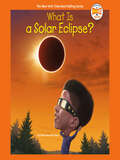
By Dana Meachen Rau. 2024
Learn about the phenomenon of a solar eclipse just in time for the Great American Eclipse that will take place…
on April 8, 2024 in this title in the Who HQ Now series featuring newsmakers and trending topics. Just in time for the third North American total solar eclipse of the twenty-first century, this book explains how to safely observe solar eclipses, how long eclipses last, and why they result in a blackout period during the day. Young armchair astronomers and astronauts will be inspired by the wonders of outer space and what exists beyond our atmosphere as they learn more about the moon, the sun, and our earth. What really happens during a solar eclipse and how does it affect the energy in our atmosphere? You'll find the most up-to-date eclipse information in this exciting new book
By Dave Williams. 2023
Really “high” tech to inspire us for sustainable solutions on Earth.Who could imagine an idea born on a space station…
would help sustain our planet? Astronauts, living on the International Space Station, have to protect their resources because their lives depend on it. They learn to conserve water, air, food, energy, and waste.These efforts have in turn lead to amazing and innovative ideas for air quality, food production, and water purification here on Earth.With vivid, energetic illustrations, photographs, and Dr. Dave’s experiments on key topics, readers learn about technological innovations such as waterless toilets and the world’s tallest air purification tower.
By Hal Marcovitz. 2022
Covers the reports of unidentified flying objects, or UFOs, that have sparked many investigations, some by scientists but many by…
amateur UFO hunters. After numerous probes into the possibility that UFOs regularly visit the Earth, experts remain divided on whether alien encounters have truly occurred. For senior high and older readers. 2022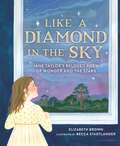
By Elizabeth Brown. 2022
"This picture book biography shines a light on the little-known poet and author of the beloved lullaby, and tells the…
story behind the classic and universally recognized rhyme." -- Provided by publisher
By Michelle Nichols. 2016
"Explore the wonders of the universe through hands-on fun! In Astronomy Lab for Kids, science educator Michelle Nichols has compiled…
52 labs and activities that use everyday materials from around the house to encourage kids, their friends, and their families to look up, down, and around at everything from the shadows on the ground to the stars in the sky. Mini astronomers will learn about things such as the size and scale of planets using sandwich cookies and tennis balls, how to measure the speed of light with a flat candy bar and a microwave, how to make a simple telescope with magnifying glasses, and so much more! Kids begin their journey through the stars by creating a science journal to track their experiments and record their observations. Foundational skills, like how to make observations, measure angles, and determine directions, are laid out first. The lessons expand with explorations of size and scale; light, motion, and gravity; and then on to investigations of our Solar System and finding constellations in the night sky." -- Provided by publisher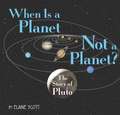
By Elaine Scott. 2007
Concise history of astronomy explains the traditional notion that nine planets orbit the Sun. Describes the discoveries of planet-like objects…
and the 2006 process in which astronomers changed Pluto's classification from a planet to a dwarf planet, leaving eight true planets in our solar system. For grades 4-7. 2007
By Lesa Cline-Ransome, Raúl Ón. 2019
Before John Glenn orbited the Earth or astronauts walked on the moon, a group of dedicated female mathematicians known as…
"human computers" used their knowledge, pencils, adding machines, and writing paper to calculate the orbital mechanics needed to launch spacecraft. Katherine Johnson was one of these mathematicians who used trajectories and complex equations to chart the space program. Even as Virginia's Jim Crow laws were in place in the early 1950s, Katherine worked analyzing data at the NACA (later NASA) Langley laboratory. For grades 2-4
By Ilima Loomis. 2019
"On August 21, 2017, much of America stood still and looked up as a wide swath of the country experienced…
totality--a full solar eclipse. Even in areas outside the path of totality, people watched in awe as the moon cast its shadow on the sun. For most, this was simply a once-in-a-lifetime experience. Not so for Shadia Habbal, who travels the world in search of solar eclipses in order to study the sun's corona. Solar wind and storms originating in the corona can have big effects on our planet. They can disrupt technology, expose aircraft to radiation, and even influence global climate change. In the months leading up to the 2017 eclipse, Shadia assembles a team of scientists to set up camp with her in Mitchell, Oregon. Years earlier, a long, expensive trip to Indonesia to study an eclipse failed when the skies remained too cloudy to see it. Shadia is determined to have the 2017 eclipse be a success. Will the computers fail? Will smoke from nearby fires change direction? Will the cloudy skies clear in time? Readers will be on the edge of their seats as they count down the months, days, hours, and finally minutes until totality." -- Goodreads